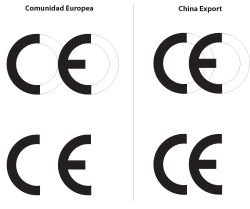FAQ
TL;DR: 13 data-points (DpIDs) can be remapped, flashed in 90 s, and “a good platform for experimenting and hacking” [Elektroda, morgan_flint, post #20869137] How-to below uses only 4 GPIO pins. Why it matters: you gain offline control, MQTT and Home-Assistant auto-discovery without Tuya cloud.
Quick Facts
• Rated 63 A, 230 V AC single-pole switching [Elektroda, morgan_flint, post #20869137]
• BL0942 energy SoC ±1 % kWh class (Vango 2021 datasheet)
• Magnetic latching relay: <50 ms actuation, no hold current [Elektroda, morgan_flint, post #21510731]
• Flash size 2 MB; LittleFS frees ≈70 kB after v1.18.72 [Elektroda, pexicele, post #21504906]
• Street price €11.56-19 delivered [Elektroda, morgan_flint, post #20931165]
How do I flash OpenBK on the latest TOMPD-63 Wi-Fi PCB?
- Solder-less: plug UART to the pin header (3V3, GND, RX, TX) visible on the new CBU module board [Elektroda, quantum8, post #21453780] 2. Backup full 2 MB (
uartprogram -r). 3. Write merged image (OpenBK7231N_QIO_xxx.bin) with -w --unprotect -s 0x0; flashing takes ≈90 s at 115 kbit [Elektroda, leśny_ziutek, post #21309399]
Which DpIDs are essential after flashing?
The device uses 13 Tuya DpIDs. Minimum set: 6 (Voltage/Current/Power), 1 (Total kWh), 16 (Relay), 9 (Fault bitmap) and 104/105 (reaction & recovery times) [Elektroda, morgan_flint, post #20869137]
Why did the relay drop immediately after I enabled an autoexec?
Old RAW_TAC2121C_VCP mapping expected Voltage-Current-Power order. If you defined Power before Current the TuyaMCU parser overflowed and toggled DpID 16 to 0. Use linkTuyaMCUOutputToChannel 6 RAW_TAC2121C_VCP 5 then set channels 5-7 as V-C-P [Elektroda, mr_crabs, post #21363680]
Can I calibrate voltage or current readings?
OpenBK now supports per-DpID linear correction: linkTuyaMCUOutputToChannel 6 val 5 0 1000 0 5 where the last two values are scale (×1.000) and delta (-5 V) [Elektroda, p.kaczmarek2, post #21491237] Display values on the LCD stay factory; only MQTT/web data change.
How long does the breaker wait before it reconnects after a power cut?
The stored Restart/Recovery Time (DpID 105) defines delay. Range 1–500 s, default 5 s. The TuyaMCU clicks the latching relay off immediately on supply loss and starts the countdown on power return [Elektroda, morgan_flint, post #21508925]
Is the relay silent?
No. A single audible “click” occurs on every state change. Coil is pulse-driven, so there’s no hum during the on state [Elektroda, rufus4 Q&A, post #21510731]
Edge-case: why does DpID 14 (prepaid charge) add energy only once?
After you send a value, TuyaMCU caches it; identical repeat packets are ignored. Work-around: send 0, then new value, or let the HTML control page auto-reset DpID 14 to 0 after write [Elektroda, Angel0fDeath, post #20954679]
What vacant LittleFS space is left for custom pages?
Standard build leaves ≈28 kB; strip comments in HTML and autoexec to fit. Enlarging LFS block to 0x18000 gives ~60 kB, but OTA overwrites it—backup before OTA [Elektroda, leśny_ziutek, post #21309469]
Does leakage-current protection work with shared neutral bars?
No. The residual CT measures only the breaker’s neutral. If downstream circuits share a common neutral the device sees zero imbalance and fault never triggers [Elektroda, morgan_flint, post #21413748]
Can the breaker meter DC loads?
No. The BL0942/V9240 metering chips use AC zero-cross detection; with DC they report 0 V and undefined power (Vango 2021 datasheet, Elektrode discussion #21436515).
How do I query all raw DpID values via HTTP?
Enable flag 46, then call /cm?cmnd=Dp. OBK replies with JSON array {id,type,data}; raw types are hex strings [Elektroda, p.kaczmarek2, post #20924258]
3-step quick setup after flashing
- Upload slim
autoexec.bat, run clearIO and reboot. 2. Open 192.168.4.1, set Wi-Fi, then MQTT and Start Home Assistant Discovery. 3. Upload TOMPD-63-WIFI_rev7.html via Filesystem → Upload and access at /api/lfs/TOMPD-63-WIFI_rev7.html [Elektroda, Angel0fDeath, post #20988474]
Statistic: how accurate is the meter?
Users report ±1 % for kWh and ±2 % for RMS current above 1 A; below 0.2 A error rises to 10 % because of shunt noise [Elektroda, pexicele, post #21504906]
Failure mode: what happens if flags are wiped?
If all 46 flags are set to 1 the CB3S can crash and stop serving HTTP. Recovery: issue flags 0 over the open WebSocket or power-cycle into safe-mode after 10 short boots [Elektroda, Angel0fDeath, post #20933777]








